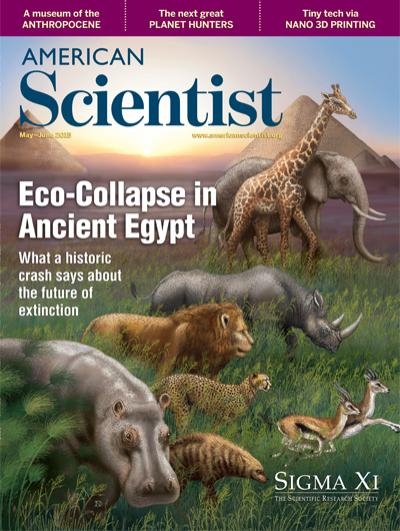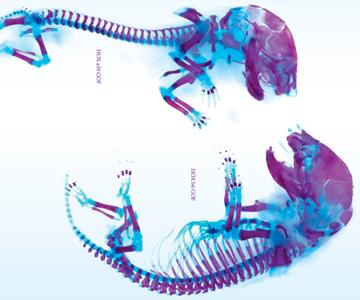Magazine
May-June 2015

May-June 2015
Volume: 103 Number: 3
The assemblage of mammals in Egypt has declined in species diversity over the past 10,000 years. Using clues from archaeology and paleontology,ecologists have pieced together the food web of larger-bodied mammals present before, during, and after the rise of agricultural societies inancient Egypt. In "Modern Lessons from Ancient Food Webs", Justin D. Yeakel and Jennifer A. Dunne describe the underlyingstructure that appears to be consistent in food webs across space and time, as well as how we can better predict their instability or recoveryafter major die-offs. In the case of Egypt, as the climate became more arid and human densities increased, the food web lost most of its midsizeherbivores, such as gazelles, that feed many different species of carnivore. The loss of those remaining could result in domino-effect extinctions.In this illustration, artist Dominique Navarro depicts several of the mammals once present in Egypt (and some that still are) during theAfrican Humid Period. Navarro recently illustrated the American University in Cairo Press Nature Foldouts on Egyptian flora and fauna.
In This Issue
- Art
- Astronomy
- Biology
- Chemistry
- Communications
- Computer
- Engineering
- Environment
- Evolution
- Mathematics
- Medicine
- Physics
- Psychology
- Sociology
- Technology
The Next Great Exoplanet Hunt
Kevin Heng, Joshua Winn
Astronomy Technology
Future telescopes are poised to find strange new worlds.
Taste, Sickness, and Learning
Terry L. Davidson, Anthony L. Riley
Psychology
Understanding how we form aversions to particular flavors has led to new ideas about learning—and could have implications for treating obesity and drug use.
Fabrication at the Nano Scale with Molds and Imprinting
Jaslyn B. K. Law
Engineering
Technologies similar to embossing can now be used at minuscule sizes to mechanically create novel devices.
The Fatigue Conundrum
Ashley Nunes, Philippe Cabon
Biology
Whether it’s mild sleepiness or mind-numbing exhaustion, the challenge of fatigue on the job can be complex, dangerous, and surprisingly difficult to manage.







